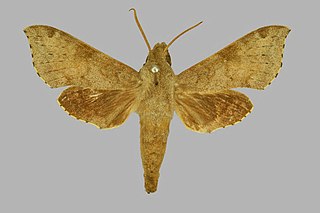
Hawaii is an island state in the Western United States, about 2,000 miles (3,200 km) from the U.S. mainland in the Pacific Ocean. It is the only U.S. state outside North America, the only one which is an archipelago, and the only one in the tropics.
Hawaiian is a Polynesian language of the Austronesian language family that takes its name from Hawaiʻi, the largest island in the tropical North Pacific archipelago where it developed. Hawaiian, along with English, is an official language of the US state of Hawaii. King Kamehameha III established the first Hawaiian-language constitution in 1839 and 1840.

Oahu is the third-largest of the Hawaiian Islands. The island of O’ahu and the Northwestern Hawaiian Islands constitute the City and County of Honolulu. The state capital, Honolulu, is on Oʻahu's southeast coast. Oʻahu has a population of 995,638, up from 953,207 in 2010.

Hawaii is the largest island in the United States, located in the state of Hawaii. It is the southeasternmost of the Hawaiian Islands, a chain of volcanic islands in the North Pacific Ocean. With an area of 4,028 square miles (10,430 km2), it has 63% of the Hawaiian archipelago's combined landmass. However, it has only 13% of the archipelago's population. The island of Hawaiʻi is the third largest island in Polynesia, behind the north and south islands of New Zealand.

The Hawaiian Islands are an archipelago of eight major volcanic islands, several atolls, and numerous smaller islets in the North Pacific Ocean, extending some 1,500 miles from the island of Hawaiʻi in the south to northernmost Kure Atoll. Formerly called the Sandwich Islands, the present name for the archipelago is derived from the name of its largest island, Hawaiʻi.

The governor of Hawaii is the head of government of the U.S. state of Hawaii and its various agencies and departments, as provided in the Hawaii State Constitution Article V, Sections 1 through 6. It is a directly elected position, votes being cast by popular suffrage of residents of the state.

The yellow-billed teal is a South American species of duck. Like other teals, it belongs to the diverse genus Anas; more precisely it is one of the "true" teals of subgenus Nettion. It occurs in Argentina, the Falkland Islands, Chile, Peru, Bolivia, Uruguay, and Brazil. It has also established itself in South Georgia, where it was first recorded breeding in 1971, and has been recorded as far east as Tristan da Cunha. It inhabits freshwater wetlands, preferring palustrine habitat to rivers. Considering its wide range and local abundance, it is not considered threatened by the IUCN.
Paravandellia is a genus of pencil catfishes native to South America.

Pearl Harbor is an American lagoon harbor on the island of Oahu, Hawaii, west of Honolulu. It was often visited by the Naval fleet of the United States, before it was acquired from the Hawaiian Kingdom by the U.S. with the signing of the Reciprocity Treaty of 1875. Much of the harbor and surrounding lands are now a United States Navy deep-water naval base. It is also the headquarters of the United States Pacific Fleet. The U.S. government first obtained exclusive use of the inlet and the right to maintain a repair and coaling station for ships here in 1887. The surprise attack by the Imperial Japanese Navy on December 7, 1941, led the United States to declare war on the Empire of Japan, making the attack on Pearl Harbor the immediate cause of the United States' entry into World War II.
Tamsica is a genus of moths of the family Crambidae.

Gyrtona is a genus of moths of the family Euteliidae first described by Francis Walker in 1863.

Leptozestis is a genus of moths in the family Cosmopterigidae.
Tamsica geralea is a moth of the family Crambidae. It is endemic to the Hawaiian island of Kauai.
Tamsica homodora is a moth of the family Crambidae. It is endemic to the Hawaiian island of Oahu.
Tamsica hyacinthina is a moth of the family Crambidae. It is endemic to the Hawaiian islands of Oahu and Hawaii.
Tamsica hydrophila is a moth of the family Crambidae. It is endemic to the Hawaiian island of Oahu.

Temnora griseata is a moth of the family Sphingidae. It is known from forests from Nigeria to southern Congo, southern Tanzania and Malawi.
Leptozestis oxyptera is a moth in the family Cosmopterigidae described by Oswald Bertram Lower in 1900. It is found in Australia, where it has been recorded from New South Wales.
Scieropepla is a genus of moths in the family Oecophoridae.

Asaphodes oxyptera is a species of moth in the family Geometridae. This species is endemic to New Zealand and is only found in the Auckland Islands.










